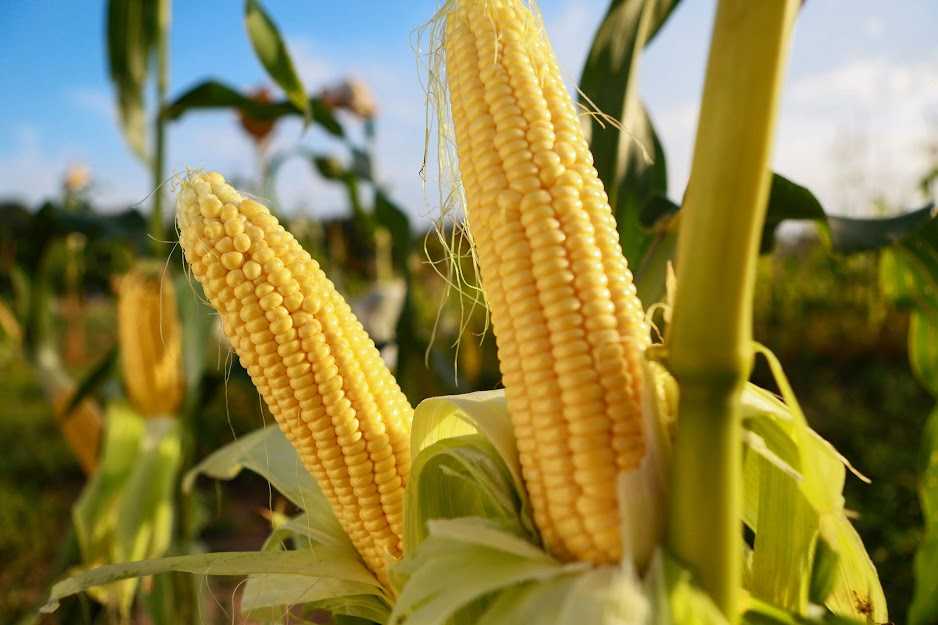Ukrainian corn under pressure: will it withstand competition from the US?
6 October 12:08
In 2025, Ukraine’s corn exports face new challenges, especially in the key European market. According to analysts, in the 2025/26 marketing season, the volume of supplies may increase to 22.4 mln tons, which is 7% more than in the current year. However, competition with the US, price volatility and global trade conflicts are forcing Ukrainian farmers to reconsider their strategies.
Is Ukraine at risk of losing the EU?
Despite growing competition from the US, Ukraine continues to actively supply corn to the European Union. This was stated by Bohdan Dukhnytskyi, a leading researcher at the Department of Agrarian Market and International Integration of the National Research Center “Institute of Agrarian Economics”, Doctor of Economics, in a commentary
According to the expert, the situation on the European corn market is ambiguous, and Ukraine does not risk losing the EU as a key destination. However, the competition with the US is growing.
“The current situation on the corn market is quite ambiguous. It is due to the fact that Spain, which is the largest buyer of Ukrainian corn in the EU, has recently begun to favor purchases from the US,” explains Dukhnytsky.
Spain, the largest buyer of Ukrainian corn in the EU, imported 2.4 mln tons from Ukraine in 2024/25 season, the same amount as from the US.
“This was in sharp contrast to the figures of the previous 2023/24 marketing year: Ukraine sold 6.2 mln tons of corn to Spain, while the United States sold only 100 thsd tonnes. Moreover, for the current season 2025/26, the Spaniards have already signed the contracts for the purchase of about 0.5 mln tonnes of corn from the USA,” the expert said.
Price is the main factor of competition
One of the main reasons for the change in the import structure is the price difference.
“Last season, in some periods, Ukrainian corn was 20 USD/t more expensive than the US corn,” the expert emphasizes.
As of the end of September 2025, the U.S. corn costs $242/t, while the Ukrainian corn is $251/t, remaining the most expensive on the European market.
Global factors: China reduces imports
The global corn market is experiencing changes due to the trade confrontation between the US and China, one of the world’s largest consumers of grain.
“In the current fiscal year – from October 2024 to September 2025 – the Ministry of Agriculture of China estimates corn imports at 3 million tons, which is significantly less compared to the previous forecast of 7 million tons,” Dukhnytskyi said.
According to him, in the current and next fiscal year, China has not contracted a single shipment of U.S. corn. Therefore, US farmers are forced to pay attention to other potential markets to compensate for these losses.
Ukrainian corn retains its position in the EU
Despite the activity of the US, Ukraine is not losing its position.
“On the other hand, Ukraine continues to supply corn to the markets of the European Union, in particular, in the current marketing year, exporting to Italy, the Netherlands, Belgium, Cyprus, and Greece, so we are not talking about a complete loss of the European market,” Dukhnytsky emphasized.
In addition, the EU countries are expected to reduce the corn harvest, which should lead to additional need for imports
Forecast: the demand for Ukrainian corn will grow
The final conclusions on the export dynamics will be made after the harvest in Ukraine is completed and the needs of the main importers – Turkey and Egypt – are assessed.
“Final conclusions can be made later, when the situation with the actual corn harvest in Ukraine becomes clearer, as the harvesting is ongoing, as well as the needs of other key importers, such as Turkey and Egypt, which will determine the objective export potential of our country in the near future,” the scientist summarized.
TOP-5 buyers of Ukrainian corn
According to the results of the calendar year 2024, our country exported 29.6 mln tonnes of corn in total, including more than 14 mln tonnes to the European Union. Last year, Spain (5.2 mln tonnes), Turkey (3.6 mln tonnes), China (3.5 mln tonnes), Egypt (3.3 mln tonnes) and the Netherlands (2.9 mln tonnes) were the largest markets for Ukrainian corn.
In January-July 2025, Ukraine exported 12.6 mln tonnes of corn, mainly to Turkey (4.1 mln tonnes), Italy (1.6 mln tonnes), Spain (1.3 mln tonnes), the Netherlands (1.1 mln tonnes), and Egypt (1.1 mln tonnes). South Korea, Libya, Belgium, Lebanon, Tunisia, Cyprus, and Bulgaria also buy large volumes of Ukrainian corn.
“Currently, Ukraine is shifting the timing of harvesting and exporting corn of the new harvest. Although, according to the forecasts of the Institute of Agrarian Economics, it is expected that in 2025 Ukraine may harvest more corn than last year,” Dukhnytskyi emphasized.
Corn harvest forecast 2025
In 2025, Ukraine’s agricultural sector will demonstrate resilience despite the challenges of war and climate change. According to the experts of the National Research Center “Institute of Agrarian Economics”, the gross harvest of corn will reach 27-28 million tons.
“In 2025, the gross harvest of the crop is expected to increase by 1.9% compared to last year, which will amount to 27-28 mln tons. This result is in line with the average for 2022-2024,” said
dmytro Liudvenko, Senior Researcher at the Department of Agricultural Production Economics of the National Research Center “Institute of Agrarian Economics”. [Kommersant]
At present, domestic agricultural producers have threshed only about 5% of the corn acreage and harvested almost 1 million tons of grain with an average yield of over 49 c/ha.
“Zaporizhzhia and Dnipro regions are the leaders in terms of harvested areas. At the same time, Sumy and Poltava regions harvested more grain,” summarized Liudvenko.
Ukraine maintains stable potential in corn production, and the 2025 harvest is expected to be on par with the average annual figures of recent seasons. The main challenges remain competition in foreign markets, logistical constraints and fluctuations in global prices, but the domestic agricultural sector demonstrates flexibility and readiness to adapt to new conditions.









